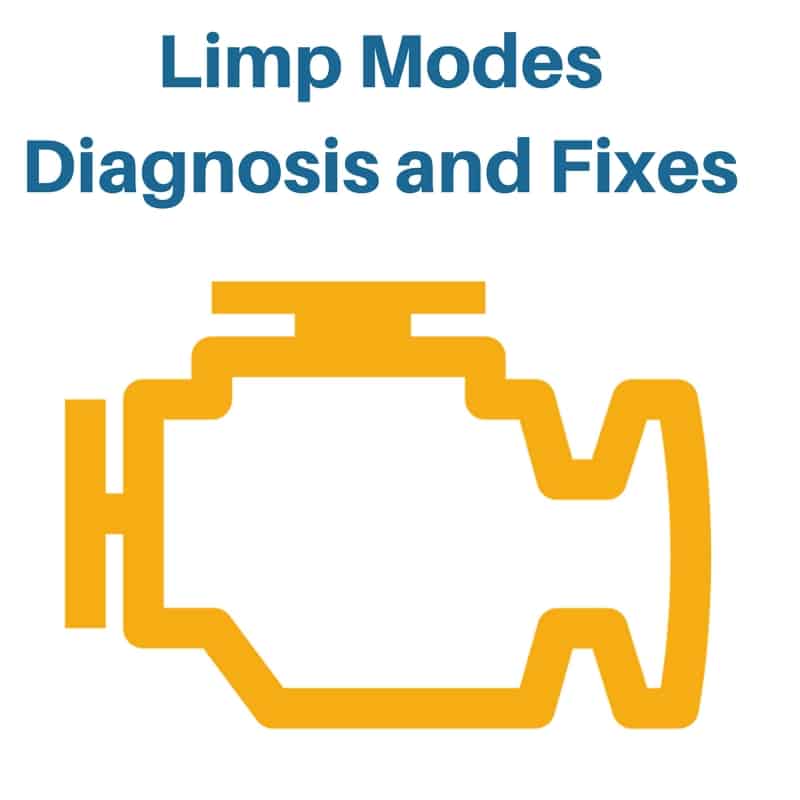Limp mode can occur when a set of conditions have been met that cause the transmission to try and preserve itself from a catastrophic failure. Most of the time, limp mode is going to max out the transmission line pressure and cause the transmission to shift really hard. It may also only allow the vehicle to operate in certain forward gears. Fixing limp mode is important. It’s really only meant to get your vehicle to the dealer’s service department without the aid of a tow. Here’s more on what causes limp mode.
1. Reset Limp Mode
In order to fix limp mode, we need to establish whether or not the transmission has entered it in error or not. The easiest way to do that is to try turning the vehicle off for a few moments. Once you fire it back up, if it’s still in limp mode, you’re going to have to address the underlying problem.
2. Fix Wiring Issue That Cause Limp Mode
Assuming that you have left the vehicle turned off for a minute and it was still in limp mode, the two most likely fixes for limp mode are going to involve Wiring Issues or an issue in the case.
Before cracking the case open on any transmission, a great place to start is the wiring that goes to the transmission itself. If the transmission is not getting signal, than it’s not going to know what to do as far as shift points, how fast the vehicle is going, the speed of the engine. Nothing. This means that it’s going to default to a gear that’s tall enough to pull operate the vehicle at a relatively safe speed, but also get the vehicle moving.
There are two places that you need to look for a bad wiring harness.
- The harness itself
- Where the harness plugs into the transmission
Look where the harness plugs into the transmission
A common place to look at when you’re trying to fix the transmission that is the limp mode is going to be where the wiring harness plugs into the transmission itself. It’s down there towards the bottom of the vehicle and can take a lot of damage from debris on the road and the elements, which makes it a good candidate for having something gone wrong.
Go ahead and give it a jingle, and see if it is loose. Next you’re going to want to give it a visual inspection to see if it has taken any damage.
The harness itself
If you didn’t see any damage around where the harness plugs into the transmission, then it is very likely that the wiring coming from the engine’s computer to the transmission is faulty. You’re going to want to look around where the harness makes contact with metal. There are certain pressure points where over the long course of an engine’s life it can rub the harness, this is especially true in front will drive vehicles.
3. Diagnose and Fix Limp Mode
Although it very well be a wiring issue, or a one time pop. If checking the wiring harness hasn’t solved the problem, it’s going to be an actual issue in the transmission itself. A solenoid, pressure regulator, or any other part could have gone bad. You’ll need to take it in and have it looked at that, or you can use a code scanner to see what trouble codes the car has thrown. In fact, if you already have a code scanner this might be a better place to start than taking a look at the harness.
In order to use the code scanner to diagnose limp mode you’re going to need to:
- Make sure that you are somewhere safe.
- Make sure that the engine has been off for at least 5-10 minutes. This will give the engine computer a few moments to sort anything out.
- Go ahead and verify that the transmission is still in Limp Mode. Sometimes time provides the fix.
- Once you have absolutely confirmed that the vehicle going into limp mode was not a fluke, it’s time to get serious.
- You’ll need to find where the scanner plugs into the vehicle (usually under driver’s side dash) and see what codes are stored in the vehicles memory. Once you do that, go ahead and Google them and see if any of them might throw limp mode.

